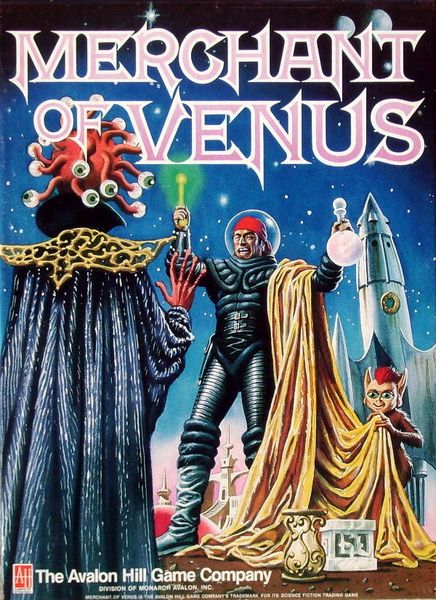Merchant of Venus (1988) Board Game
Merchant of Venus is a classic board game that was first released in in 1988. It was designed by Charles Kibler, George I. Parrish, Jr., and Regina De Simone, and published by The Avalon Hill Game Co. The game has since gained a dedicated following among fans of economic, exploration, and science fiction board games.
Game Components of Merchant of Venus
How To Setup Merchant of Venus
Setting up Merchant of Venus involves several steps. First, players choose their starting ship and pilot card. The game board is then laid out, and each player receives initial funds. The alien culture cards are shuffled and placed face-down on their respective planets. Encounter tokens are also shuffled and placed face-down on designated spaces. Players set up their starting position, and the game is ready to begin. The setup process, while detailed, typically takes about 15 minutes.
Gameplay Mechanics and Game Objective
Mechanics
Game Objective
Player Experience
Merchant of Venus offers a rich and complex gameplay experience. Players explore the galaxy, discover new alien cultures, and establish lucrative trade routes. The game rewards flexible and opportunistic play, with multiple strategies available, such as focusing on trade efficiency, passenger transport, or even pirate hunting. The solo variant adds a roguelike element, making the game demanding and unforgiving.
Pros
Cons
Personal Thoughts on Merchant of Venus
Merchant of Venus is ideal for players who enjoy complex economic and trading games with a sci-fi twist. It is best suited for those who appreciate depth in gameplay mechanics and are willing to invest time in learning the rules. The game’s ability to offer multiple playstyles and a high level of replayability makes it a great addition to any board game collection, especially for fans of interstellar exploration and trade. However, it may not be the best choice for casual or new gamers due to its complexity and steep learning curve.
We are supported by our audience. When you purchase through links on our site, we may earn an affiliate commission, at no extra cost for you. Learn more.

